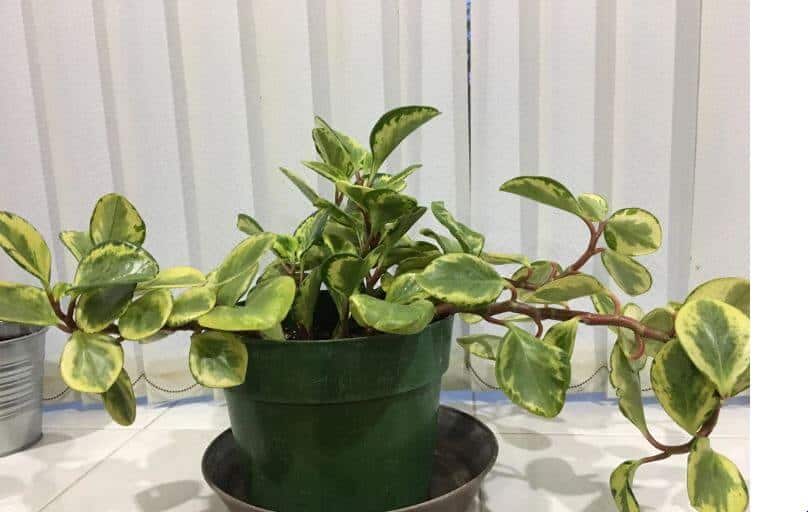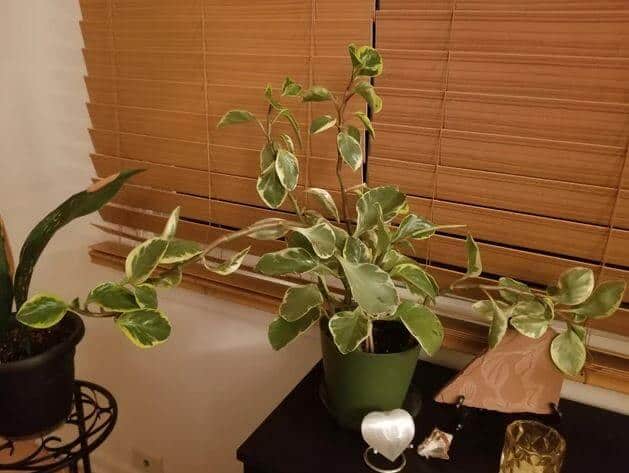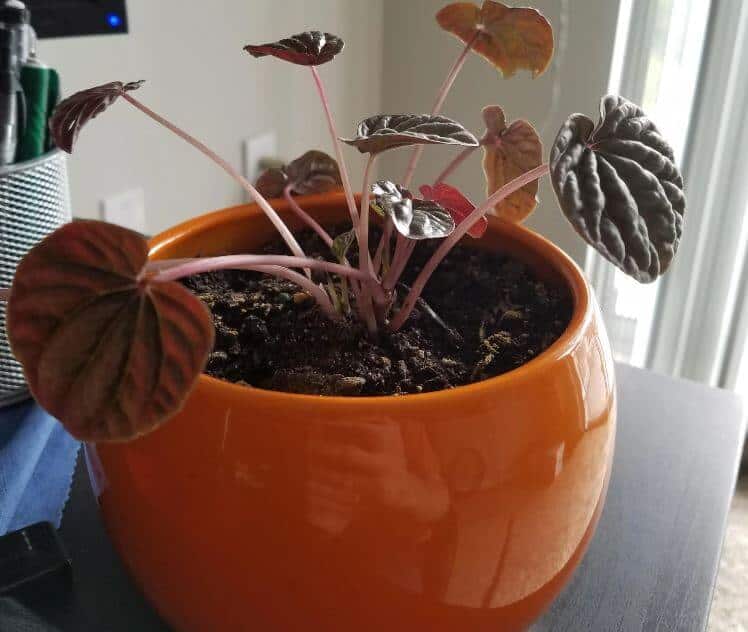Last Updated on January 30, 2023 by a Friendly Gardener
Peperomia is a beautiful, easy-to-care-for houseplant that is the perfect choice for beginners, home gardeners with little time, or those who travel frequently. But my peperomia is drooping, why?
Despite its ease of care, it can occasionally suffer some problems and one of the most common is drooping. Let’s examine why peperomia plants droop and how to fix your plant.
A Droopy Peperomia

The most common causes for droopy peperomia are underwatering and dehydration although substantially low humidity levels can contribute. However, these aren’t the only reasons. Other causes may include extreme environmental temperatures, the onslaught of root rot, or an infestation by pests. All these problems can be resolved if caught early and treated. Here’s what to watch for and how to aid your plant in recovery.
What Causes Peperomia Leaves Drooping?

Consider that a healthy peperomia will feature strong, firm stems and foliage. The plant will grow upright with leaves that do not bend. If your plant has soft, flexible stems and leaves and the plant sags, you have droopy peperomia.
The most common causes of droopy peperomia include
- Overwatering
- Underwatering
- Lack of humidity
- Improper environmental temperatures
- Improper fertilization
- Pest infestations
- Repotting trauma
- Dusty foliage
Overwatering
Overwatering is the primary cause of fatality for houseplants. If the plant’s stems appear floppy and soggy or mushy and of course wilt, your plant is most probably overwatered. Yellow leaves are also indicative of overwatering as is a peperomia dropping healthy leaves.
To aid in preventing overwatering, use a soil mix that is loose and guarantees excellent drainage and soil aeration. If the soil bed retains excess water, the root system will be deprived of oxygen and your plant will suffocate. Root rot will take hold and roots will be unable to furnish nutrients. Your plant will begin to droop and if left untreated will die.
If the plant already appears mushy, you need to repot it. Remove the plant, rinse off the root system with tepid water and trim off all compromised unhealthy roots. Repot your plant in fresh soil in a pot with a good number of drainage holes. Water thoroughly and permit the excess water to drain. After, water approximately every ten days.
Underwatering
This is usually the most common cause of peperomia leaves drooping. A peperomia will store water in the foliage so that they feel firm to the touch. Remember that plants transpire, so they will always be emitting some amount of vapor. If leaves do not contain enough water, they will show that they are stressed. When a peperomia is dehydrated, it will have difficulty standing upright. The plant will no longer be firm and will sag. Leaves droop and the edges and tips can turn brown. While this is not a houseplant that seeks constant moisture, it also cannot be left bone dry.
When the soil is dry approximately an inch to two deep, it’s time for watering. This will generally occur every one to three weeks depending on the plant’s environment.
Lack of Humidity
Generally, peperomia thrives in normal household humidity, but if you have a dryer climate, your plant can suffer. Humidity levels generally drop indoors in the winter due to heating and occasionally in the summer if air conditioning is frequent. When a peperomia is struggling with indoor humidity levels, it may begin to curl its leaves followed by drooping. This reduces the plant’s foliage surface to retain moisture.
As tropical plants, peperomia will enjoy higher humidity levels in its natural habitat. A hygrometer can indicate if your plants are getting sufficient humidity. Most tropical plants, including peperomias, will thrive at 50% or higher. If you need to improve humidity levels, use a space humidifier, or a pebble tray underneath your plant. Grouping plants together will also raise humidity through the creation of a microclimate. Occasional misting can help.
Improper Environmental Temperatures

Tropical peperomias like temperatures that measure between 60° and 80°F. If temps drop below 50°F your plant will be in trouble and stressed. Leaves may curl and the plant may wilt. These plants cannot handle freezing temperatures or frost. Freezing causes the formation of crystals within the plant which destroy the structure and lead to death.
Extreme temps registering above 80°F will also cause plants to stress as well as direct sunlight exposure, so be careful if you take your peperomia outdoors for a spell in the summer or warmer months.
Improper Fertilization
Peperomias are not heavy feeders so overfertilization is unwarranted. Exaggerated feeding will cause a buildup of salts in the soil bed that will prevent roots from absorbing adequate water. Foliage will yellow or turn brown on tips and edges due to dehydration. Drooping will follow.
If you think you have overfertilized, flush out your plant’s soil bed to remove salt buildup or repot your plant entirely in fresh soil and avoid fertilizing for several months. When you do feed, use a liquid plant fertilizer that has been diluted.
Pest Infestations
Peperomias are relatively pest-free, but if they are exposed to another plant that is infected, an infestation can follow. The more common pests that afflict houseplants include spider mites, mealybugs, or whiteflies. If you place your plant outdoors on a deck, porch, or balcony, it can be invaded by fungus gnats, thrips, or scales as well and you may see an occasional caterpillar, snail, or slug munching holes in leaves. When left untreated, you may observe peperomia leaves drooping.
Examine foliage, stems, and the soil bed surface for evidence of pests. Manually remove any that you see and consider showering your plant in tepid water to remove those you cannot see. Treat your plant with insecticidal soap or a natural pesticide like Neem oil that is non-toxic to humans and pets.
Repotting Trauma

When plants are repotted, they suffer a bit of shock until they acclimatize to their new soil bed. This can cause a bit of drooping. When repotting do not leave roots exposed for too long a time. Reposition your plant in its same location or one with the same light, indoor temperature, and humidity level as before. Environmental change can contribute to your plant drooping.
Dusty Foliage

Dust is not a major problem but when left to accumulate on leaves it can reduce the plant’s ability to absorb sunshine and reduce the release of gases from foliage. Shower your plant with tepid water to clean leaves occasionally or wipe foliage with a soft damp cloth.


